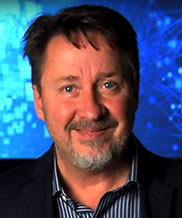Learning in Professional Networks
 Michael Richey is the Chief Learning Scientist, Associate Technical Fellow at The Boeing Company. His research portfolio is aligned to his corporate roles and responsibilities as a Boeing Associate Technical Fellow through: a) supporting the company’s business strategies by ensuring technical excellence across the enterprise in our people, technologies, processes, tools, and products, b) expand the company technical skills and performance by improving the acquisition, retention, knowledge, and utilization of our technical workforce for business success and c) participate in representing the company’s technology interests to the outside world customers, the general public, academia, and government. His current research projects include engineering education, socio-technical systems, university online STEM programs and educational data analytics. This multi-disciplinary research brings together expertise in the Learning Sciences, Complexity Science and Social Networking together with data in ways that can create an integrated understanding of system structure and behavior. In his talk, Michael looks at…
Michael Richey is the Chief Learning Scientist, Associate Technical Fellow at The Boeing Company. His research portfolio is aligned to his corporate roles and responsibilities as a Boeing Associate Technical Fellow through: a) supporting the company’s business strategies by ensuring technical excellence across the enterprise in our people, technologies, processes, tools, and products, b) expand the company technical skills and performance by improving the acquisition, retention, knowledge, and utilization of our technical workforce for business success and c) participate in representing the company’s technology interests to the outside world customers, the general public, academia, and government. His current research projects include engineering education, socio-technical systems, university online STEM programs and educational data analytics. This multi-disciplinary research brings together expertise in the Learning Sciences, Complexity Science and Social Networking together with data in ways that can create an integrated understanding of system structure and behavior. In his talk, Michael looks at…
1. Adaptability matters: We are living in an age transformed by intelligent systems. Data science methods including Machine Learning, Artificial Intelligence and Natural Language Processing are changing business communication and making workforce expertise and culture more transparent and traceable. Coupling AI and digital data between agents and system culture enables us to see and measure interaction patterns, agent sensing, acting, and knowledge optimization. Changes in the skills and knowledge necessary for successful digital life and workflow are impacting organization cultural systems. These changes promise rapid innovation for companies due to the need for a highly educated “adaptive” workforce, and also give companies new opportunities to track the flow-quality of information, including key competency and agility measures. These data are starting to uncover the distributive cognition of agents within a social network, “the ghost in the machine” where thoughts are embodied in the digital exhaust of agent actions. (Madhavan and Richey, 2016).
2. What adaptability looks like: Organizations are inherently relational. Firms are complex adaptive systems composed of a network of employees bound together by contracts, who perform tasks by negotiating internal relationships, as well as by observing, managing, and responding to constantly shifting external environments. (Richey Et Al., 2014 WIP). A missing component of the adaptability/change equation is understanding the linkages between actors, including the “supergroups” that emerge and move potential knowledge to action within the network. Key to understanding this flow of human and network capital is measuring the quality of social ties, i.e., making emergent actor expertise explicit as innovation resides within densely connected trusting, social-work related networks.
3. The future of workforce: Business leaders, educators and governments all need to be proactive in up-skilling and retraining people so everyone can benefit from the Fourth Industrial Revolution.